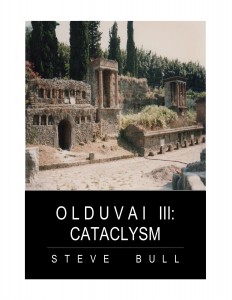Home » Posts tagged 'agroecology'
Tag Archives: agroecology
COP26 – Caught in a Net: Agriculture, Climate Change, and the Decarbonisation Agenda
COP26 – Caught in a Net: Agriculture, Climate Change, and the Decarbonisation Agenda The 2021 United Nations Climate Change Conference, also known as COP26, is the 26th of its kind. After a Covid-related postponement, it was held this year in Glasgow, Scotland between October 31 and November 12. Dr Chris Maughan has been in Glasgow for the […]
Cop-26–Caught in a Net: Agriculture, Climate Change, and the Decarbonisation Agenda
COP26 – Caught in a Net: Agriculture, Climate Change, and the Decarbonisation Agenda
Land Skills Fair: This is What Diversity Looks Like!
Land Skills Fair: This is What Diversity Looks Like! Last week I attended the Land Skills Fair (LSF), an event co-organised by the Landworkers’ Alliance (LWA) and Land in Our Names (LION). The event was intended to be about “sharing knowledge and skills about farming, forestry, crafts, food and land justice”, with an impressive range of talks, workshops, tours […]
Agroecology or Collapse Part III – Reclaiming the ‘archaic’, ‘anarchic’, and ‘utopian’ as the language of food system transformation
Food distribution in Rio de Janeiro during the pandemic. Source: AS-PTA. Agroecology or Collapse Part III – Reclaiming the ‘archaic’, ‘anarchic’, and ‘utopian’ as the language of food system transformation Agroecology is a struggle to overcome industrial agriculture and is simultaneously a practice, a science, and a movement. Detractors often criticize Agroecology saying it is archaic, […]
Agroecology or Collapse: Part 1 – From Emergency Responses to Systemic Transformations
Annual demonstrations in defense of women’s lives and agroecology in the territory of Borborema. Foto: Nilton Pereira/AS-PTA Agroecology or Collapse: Part 1 – From Emergency Responses to Systemic Transformations In this first of a three-part contribution to Agroecology Now, Paulo Petersen and Denis Monteiro present the current moment as a crisis in capitalism that demands systemic and […]
Food and Agroecology: Coping with Future Shocks
Food and Agroecology: Coping with Future Shocks The food crisis that could follow in the wake of the various lockdowns that were implemented on the back of the coronavirus may have long-lasting consequences. We are already seeing food shortages in the making. In India, for instance, supply chains have been disrupted, farm input systems for […]
These Extraordinary Times: Indigenous Peoples and coalition building for agroecology and food sovereignty
These Extraordinary Times: Indigenous Peoples and coalition building for agroecology and food sovereignty Above: Members of a Euro-American motorcycle club work alongside citizens of the Athabascan Nation to launch a fish wheel in the Copper River, Alaska. This post is based on what Indigenous Peoples (IPs) have shared with me and urged me to build […]
Farming for a Small Planet
Farming for a Small Planet People yearn for alternatives to industrial agriculture, but they are worried. They see large-scale operations relying on corporate-supplied chemical inputs as the only high-productivity farming model. Another approach might be kinder to the environment and less risky for consumers, but, they assume, it would not be up to the task […]
Farming for a Small Planet: Agroecology Now
Farming for a Small Planet: Agroecology Now The primary obstacle to sustainable food security is an economic model and thought system, embodied in industrial agriculture, that views life in disassociated parts, obscuring the destructive impact this approach has on humans, natural resources, and the environment. Industrial agriculture is characterized by waste, pollution, and inefficiency, and […]
Cuba’s sustainable agriculture at risk in U.S. thaw
Cuba’s sustainable agriculture at risk in U.S. thaw Organic farm, Alamar. Melanie Lukesh Reed/Flickr, CC BY-NC-ND President Obama’s trip to Cuba this week accelerated the warming of U.S.-Cuban relations. Many people in both countries believe that normalizing relations will spur investment that can help Cuba develop its economy and improve life for its citizens. But in agriculture, U.S. […]
Shaun Chamberlin on the Ecological Land Coop.
Shaun Chamberlin on the Ecological Land Coop. Food is an issue that galvanizes so many Transition communities, but many of the classic Transition activities around food, like Landshare and Abundance projects, are to some extent ways of making the best of the ever-shrinking space available for ecological growing. Nothing wrong with that, but it meant […]
Agroecology Can Help Fix Our Broken Food System. Here’s How.
Agroecology Can Help Fix Our Broken Food System. Here’s How. The various incarnations of the sustainable food movement need a science with which to approach a system as complex as food and farming. Thumb through U.S. newspapers any day in early 2015, and you could find stories on President Obama’s “fast-track” plans for the Trans-Pacific […]



